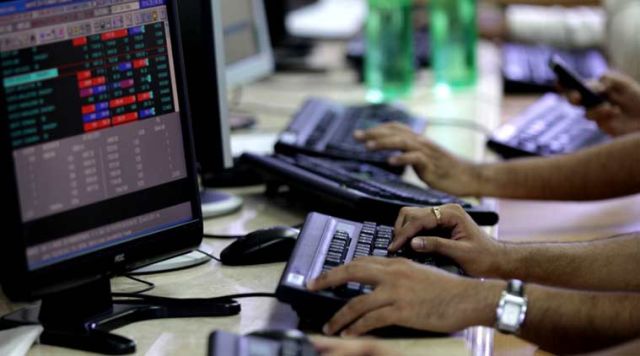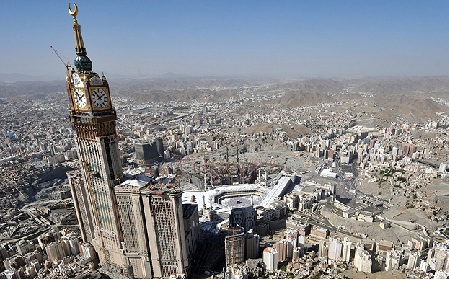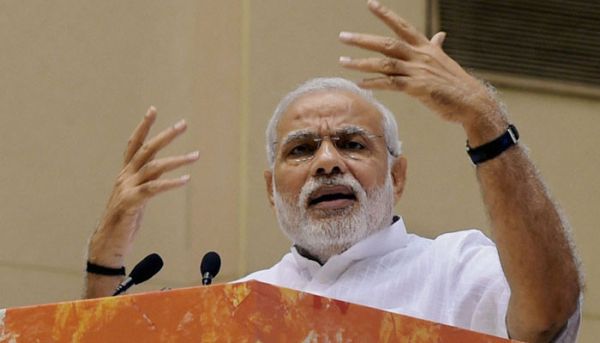
by admin | May 25, 2021 | Business Summit, Events, Halal Food, Halal Industries, Halal Medicine, Muslim World
 Istanbul : The Organisation of Islamic Cooperation (OIC) stated that the size of the global halal products market has grown exponentially in the last decade, from $3.7 trillion in 2012 and expected to reach $6.4 trillion by 2019.
Istanbul : The Organisation of Islamic Cooperation (OIC) stated that the size of the global halal products market has grown exponentially in the last decade, from $3.7 trillion in 2012 and expected to reach $6.4 trillion by 2019.
This was contained in the statement of OIC Secretary General Dr. Yousef Al-Othaimeen at the opening ceremony of the 5th edition of the OIC Halal Expo and the World Halal Summit held in Istanbul, Turkey, on November 23-25.
OIC Assistant Secretary General for Economic Affairs Ambassador Hameed Opeloyeru, who read out the statement of the secretary general, explained that organizing the annual halal expo is one of the main planks for advancing trade in the OIC. The event affords actors — traders, investors, exporters, the industry guilds and the general public — the opportunity to know the latest halal products in the member states, with a view to promoting halal products and increasing communication between the investors and industry leaders.
He stressed that there was a need for active bodies in the food, halal services, production and marketing sector in the OIC member states to follow a common course to ensure that all specialized bodies unify their standards and issue accreditation certificates for a suitable regulatory environment for these procedures.
Istanbul is hosting the Halal Expo in cooperation with the OIC-affiliated Islamic Centre for the Development of Trade (ICDT), Standards and Metrology Institute for Islamic Countries (SMIIC).
—IINA/SM/OIC-UNA

by admin | May 25, 2021 | Economy, Markets, News
 Mumbai : Ending in the positive territory for the seventh consecutive session, key Indian equity indices on Friday extended gains on the back of broadly positive global markets and value buying in consumer durables, oil and gas as well as IT stocks.
Mumbai : Ending in the positive territory for the seventh consecutive session, key Indian equity indices on Friday extended gains on the back of broadly positive global markets and value buying in consumer durables, oil and gas as well as IT stocks.
According to market observers, hopes of a potential sovereign ratings upgrade by a US ratings agency due later in the evening kept investors’ sentiments buoyed.
On a closing basis, the wider Nifty50 of the National Stock Exchange (NSE) rose by 40.95 points or 0.40 per cent to 10,389.70 points.
The barometer 30-scrip Sensitive Index (Sensex) of the BSE closed at 33,679.24 points — up 91.16 points or 0.27 per cent — from its Thursday’s close.
The BSE market breadth was bullish — 1,513 advances and 1,227 declines.
“Indian equity markets ended up in green for seventh straight sessions led by IT firms and a potential sovereign ratings upgrade by Standard & Poor’s (S&P) later in the day,” Dhruv Desai, Director and Chief Operating Officer of Tradebulls, told IANS.
The BSE mid-cap closed higher by 0.58 per cent while the small-cap index was up 0.45 per cent.
On the currency front, the rupee weakened by 20-12 paise to 64.70 against the US dollar from its previous close at 64.58-59.
“Positive global cues aided the Indian markets. Major Asian markets ended on a positive note while European indices like CAC 40 and DAX traded higher,” Deepak Jasani, Head, Retail Research, HDFC Securities, told IANS.
However, some gains were capped as investors booked profits in metals stocks and foreign investors pulled out money from stocks.
Provisional data with the exchanges showed that foreign institutional investors sold scrips worth Rs 416.28 crore, while domestic institutional investors purchased stocks worth Rs 427.63 crore.
Sector-wise, the S&P BSE consumer durables index surged by 580.57 points, followed by oil and gas index by 109.73 points and IT index by 92.20 points.
On the other hand, the S&P BSE metal index fell by 85.35 points and basic materials index by 8.36 points.
Major Sensex gainers on Friday were: Infosys, up 1.87 per cent at Rs 1,009.95; Bajaj Auto, up 1.07 per cent at Rs 3,296.80; Mahindra & Mahindra, up 1.05 per cent at Rs 1,434.70; Kotak Bank, up 0.99 per cent at Rs 1,031.10; and Power Grid, up 0.91 per cent at Rs 211.10.
Major Sensex losers were: Tata Motors (DVR), down 0.89 per cent at Rs 240.70; State Bank of India, down 0.79 per cent at Rs 332.25; Adani Ports, down 0.74 per cent at Rs 404.20; Hero MotoCorp, down 0.66 per cent at Rs 3,654.65; and ICICI Bank, down 0.64 per cent at Rs 317.05.
—IANS

by admin | May 25, 2021 | Muslim World
 Istanbul : The foreign tourist influx to Turkey experienced in 2017 will continue to increase in 2018, and early reservations suggest a growing interest from the European market.
Istanbul : The foreign tourist influx to Turkey experienced in 2017 will continue to increase in 2018, and early reservations suggest a growing interest from the European market.
The country is rapidly moving toward its 2023 vision of 50 million tourists and $50 million in tourism income. The decline in the number of European tourists compared to previous years is balanced by the fact that German tourists prefer Turkey in 2017, while tourism representatives that have started their 2018 sales are very hopeful for the next year. In the first nine months of the year, 26 million tourists came to Turkey, and the 2018 figures are expected to be even better, Daily Sabah News reported.
While tourism representatives who think that Turkey will make a big break in tourism in the next three years make essential tourism connections to Turkey with early reservations, Tatilsepeti.com General Manager Koray Küçükyılmaz told the Turkish Star newspaper that the company is receiving requests from Europe for early booking, adding that there appears to be a significant increase in the planning of European tour operators and demand for Turkey.
Küçükyılmaz also said the expected improvement and increase in the European market would hopefully be seen in 2018. “The improvement in the European market and reaching the 2015 figures will be gradually realized. Turkey’s destinations consist of regions known and liked by European customers,” Küçükyılmaz said.
More than one-third of foreigners who came to Antalya in the first ten months of the year were from Russia. In the January-October period, close to 9.5 million foreign tourists arrived at Antalya Airport. The number of passengers from abroad in the first ten months increased by 60 percent compared to the same period last year. In this period, the most significant number of tourists came from Russia with 3.6 million, which constituted 38.66 percent of total foreign visitors. Russia was followed by Germany with 1.6 million and Ukraine with 710,871 people.
—SM/OIC-UNA

by admin | May 25, 2021 | Muslim World
 London : Saudi Arabia wants to be the top global destination for Muslim tourists by the end of the decade, according to a top official.
London : Saudi Arabia wants to be the top global destination for Muslim tourists by the end of the decade, according to a top official.
“We want to beat Dubai, Malaysia, and Turkey to the top spot,” said a senior official at the Saudi Commission for Tourism and National Heritage (SCNH) in an interview on the sidelines of the World Travel Market in London.
“We have different projects in the pipeline, and we are developing our pilgrimage sites. We are opening up our historical sites, we have five UNESCO sites, and we are aiming to have ten by 2020. “We have everything in Saudi Arabia. Our history gives us a competitive advantage. We have a beautiful natural landscape and thousands of years of Islamic and pre-Islamic history. We are open to all,” said the spokesman. “For Muslims, we have the advantage that everything is already halal here.”
It comes amid a massive push to develop the Kingdom’s Red Sea coastline and maximize tourism spending among the millions of Muslims who already visit the Kingdom each year as part of Hajj and Umrah, Arab News reported.
Saudi Arabia is planning to develop hundreds of kilometers of its Red Sea coastline as a global tourism destination and has enlisted the help of Virgin Group chief Richard Branson to advise on the ambitious project, which is a key plank of ongoing economic reforms.
The Kingdom is in the “final stages” of ratifying its much-anticipated tourist visas, which would grant unrestricted leisure travel in the country, the spokesman confirmed.
“We expect the tourist visa to be in issuance within six months.”
Currently, Saudi Arabia issues two-week visas for those on business, pilgrimage or visiting resident family members but they can be difficult to obtain. A specific visa for tourists would open up the country to foreign visitors and allow access to destinations beyond the holy sites of Makkah and Madinah.
The tourism official said that the Saudi government is working on ratifying tourist visas for visitors from 165 countries, including 66 Muslim countries.
He said the Kingdom would welcome all nationalities, all religions, and female visitors.
“For women, they may not need to wear a headdress, but it is thought an Abaya will be necessary. The details of the new regulations will be confirmed with the coming months.”
He added, “Many people will be surprised by the heritage and landscapes that Saudi has. We have skiing, diving and beautiful beaches stretching across two seas.”
Dr. Yazeed Al-Shammari, the founder of Arabian Nights, a major KSA tour operator, told Arab News he was looking forward to the new tourist visa “widening and developing” his business.
“People are very curious about Saudi Arabia. Some people think that all we’ve got is sand and camels, but the reality is we have much more variety and texture than that. I’ve already had many inquiries from European agents.”
Caroline Bremner, head of travel and tourism at Euromonitor, said: “It will be interesting to see what Saudi does now as previously the focus was only on the Hajj. Saudi Arabia is a beautiful country with a lot to offer. There have been developments lately that make the country seem more attractive to visitors, such as allowing women to drive.
“It will also need to pay attention to the quality of its hotels and tourist experiences as it enters the world as an emerging tourist destination.”
—SM/OIC-UNA

by admin | May 25, 2021 | Opinions
 By Amit Kapoor,
By Amit Kapoor,
Prime Minister Narendra Modi’s efforts in building India’s global appeal for investors seems to have finally yielded returns in terms of the country’s performance in the World Bank Doing Business rankings. India witnessed its highest-ever jump of 30 places in the rankings, reaching the 100th place among 190 countries. Subsequently, it also joined the list of top 10 improvers for the first time and became the first South Asian country to achieve the feat.
The World Bank measures this in terms of a Distance to Frontier (DTF) metric, which shows the distance of the economy from the best performer in each category on a scale of 0 to 100, with the latter representing the frontier. India has shown a drastic improvement of 4.71 points over the last year from 56.05 to 60.76. To put things in perspective, China has witnessed an increase of 0.40 points.
India’s performance has been impressive by any standard. It has moved closer to the global standards in nine of the ten parameters on which the Doing Business rankings are based and has enforced reforms in eight of these categories over the last year. The three key reforms among these were resolving insolvency, ease of paying taxes online and protection of minority investors. Despite these improvements, the general sentiment has been to dismiss the rankings mainly for the flaws in its methodology.
First, the rankings are based on perception surveys of few entrepreneurs or professionals based on questions that are mostly subjective in nature. Second, they are not even based on the economic conditions of the entire economy but on one or two cities within a nation. For India, it is based on Delhi and Mumbai alone. However, the critics miss the point.
If India performs poorly even on such a limited study that chooses the best cities in the country, it speaks volumes of the business conditions across the country and is indicative of the scope of improvement that remains. Moreover, rankings are relative by definition and since the World Bank chooses a maximum of two cities for other countries as well, it should depict a near accurate performance of any country on a relative scale. Therefore, any improvement up the ladder cannot be summarily dismissed.
Further, reforms considered by the World Bank include a mix of central and state initiatives. Passing of central legislation like the Insolvency and Bankruptcy Code, 2016, that helped India jump from 136 to 103 in the “resolving insolvency” parameter have pan-India benefits and are not just limited to Delhi and Mumbai. Therefore, it would be incorrect to presume that merely focusing on a few cities is disassociated from reality even though the actions of state governments are not reflected.
Incidentally, India performs poorly in parameters where state government interference is maximum: Getting an electricity connection, starting a business and registering a property. This underlines the importance of policy coordination between the states and the Centre. Nevertheless, credit needs to be given where it is due for an improvement in rankings majorly driven by reforms undertaken by the central government over the last few years. It must be noted that the rankings have not taken into account the implementation of the Goods and Services Tax (GST). Therefore, considerable potential remains for further improvement.
But it should also be kept in mind that these rankings are not an end in themselves and are far from perfect. A lot of it is based on policies which are on the books and do not necessarily capture the real experiences on the ground. After reforms are initiated to ease the business environment, the main task of implementation begins where the real problems emerge. For instance, the World Bank applauded India’s efforts at increasing access to credit with the adoption of a new insolvency and bankruptcy code. However, the parameters fail to recognise the problem that India is going through one of its slowest phases of credit growth and that banks are wary of lending so easily.
Moreover, a lot more parameters, apart from the ones considered in the Doing Business rankings, need to be considered to understand the business environment in India. The country’s dismal performance in the Heritage Foundation’s Index of Economic Freedom (in which it is ranked 143, below most of its South Asian neighbours) and Transparency International’s Corruption Perception Index (ranked 79th), reflect the areas that the country still needs to improve upon to better the business environment.
Therefore, the chest-thumping around the Doing Business ranking improvements needs to be seen in conjunction with these factors and worked upon to ease the problems faced by common businessmen. A premature celebration can be counter-productive.
(Amit Kapoor is chair, Institute for Competitiveness, India. The views expressed are personal. He can be contacted at amit.kapoor@competitiveness.in and tweets@kautiliya. Chirag Yadav, senior researcher, Institute for Competitiveness, India has contributed to the article)
—IANS

 Istanbul : The Organisation of Islamic Cooperation (OIC) stated that the size of the global halal products market has grown exponentially in the last decade, from $3.7 trillion in 2012 and expected to reach $6.4 trillion by 2019.
Istanbul : The Organisation of Islamic Cooperation (OIC) stated that the size of the global halal products market has grown exponentially in the last decade, from $3.7 trillion in 2012 and expected to reach $6.4 trillion by 2019.



